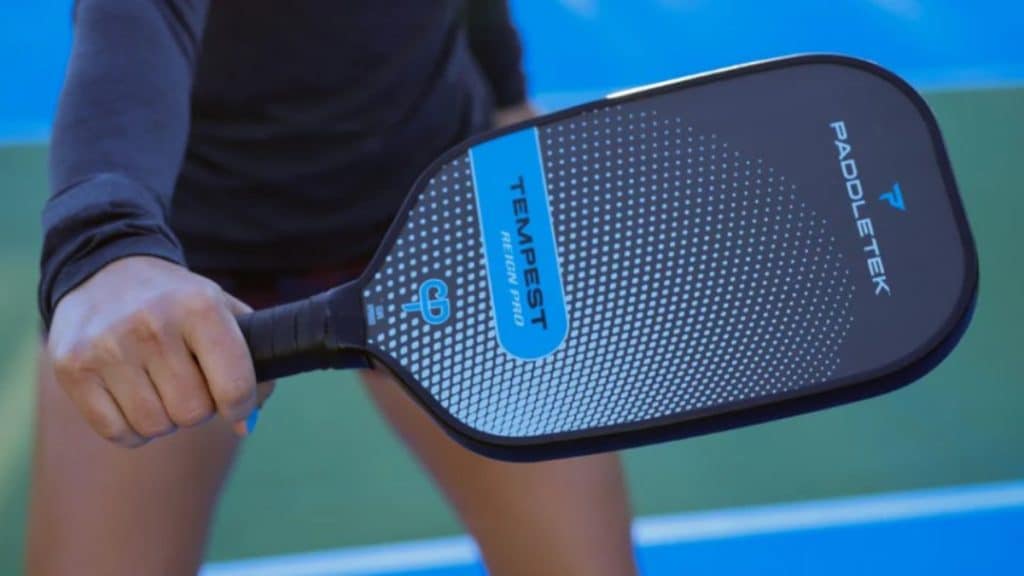As a sports enthusiast, you’ve likely heard of pickleball—a dynamic game that combines elements of badminton, tennis, and table tennis. This sport is taking the world by storm, spreading rapidly across numerous countries and captivating players of all ages.
With its growing popularity, advancements in paddle design and materials have transformed the landscape of the game. However, the ever-evolving options can feel daunting for new players. From Selkirk paddles to bespoke designs, the market is flooded with choices, making it challenging to find the perfect paddle.
In this article, we’ll unveil the key components of a pickleball paddle, explore the intricacies of material selection, and provide a step-by-step guide to help you navigate the complexities of choosing the right paddle for your game.
Component of the Paddle
The Pickleball paddle is divided into 3 main components give below are the list of few of them are:
1. Core:
The core is the pillar of the paddle, influencing both comfort and performance. Aluminum cores offer a classic, solid feel, while composite cores—made from materials like polypropylene or Nomex—are lighter and provide a tailored experience for players seeking agility and control.
2. Face:
The face is the flat surface that makes direct contact with the ball. It’s intrinsically linked to your performance, with materials like fiberglass offering powerful shots, graphite delivering a balance of power and control, and wood being ideal for precision-focused players.
3. Edge Guard:
The edge guard acts as a protective bumper, shielding the paddle from damage during intense rallies. While some paddles lack this feature, it’s a vital element for ensuring durability and longevity, especially for tournament-ready players.
Standout factor to consider while choosing the right paddles
Selecting the perfect paddle doesn’t have to be overwhelming. By focusing on these key factors, you can craft a decision that aligns with your playing style and skill level:
1. Grip Size
Grip size is a fundamental aspect of paddle selection. A grip that’s too large or too small can hinder your performance and comfort. To find the right fit, ensure there’s enough space to slide your pointer finger between your palm and fingertips when holding the paddle.
2. Paddle Face Material
The material of the paddle face underpins its performance characteristics. Here’s a breakdown of the most popular options:
. Graphite:
It is well known for its remarkable control and accuracy, as well as its lightweight and responsive design. This is the ideal option for individuals who wish to focus on skill and finesse .
. Composite:
These provide a sweet spot and are more resilient than other materials. This is a great choice for both beginners and experienced players.
. Wood:
This is an excellent choice for beginner pickleball players because it is less expensive and heavier than other models. It is considered a cheap option for students who have just started playing.
3. Pickleball Paddle Shapes
The shape of the paddle can significantly impact your gameplay. Consider the following options:
. Long Paddles
A Long paddle might be the best option for you if you are a more aggressive player who enjoys attacking, hitting drives, and speeding up balls.
. Standard Paddles
A Standard paddle with a larger sweet spot might be the best choice if you are a more control-centric player who appreciates drops, resets, counters, and finesse shots.
4. Paddle Weight
Another crucial aspect to take into account is the paddle’s weight. The general rule is that you should use the heaviest paddle you can play with without experiencing any pain or weariness during your typical play session.
. Heavier Paddles
More power, stability, and comfort are all advantages of heavier paddles, but they can also wear you out over time.
. Lighter Paddles
Lighter paddles, on the other hand, are quick and incredibly agile, making them ideal for brief volley exchanges in the no-volley zone, but it may come at the expense of some comfort and power.

